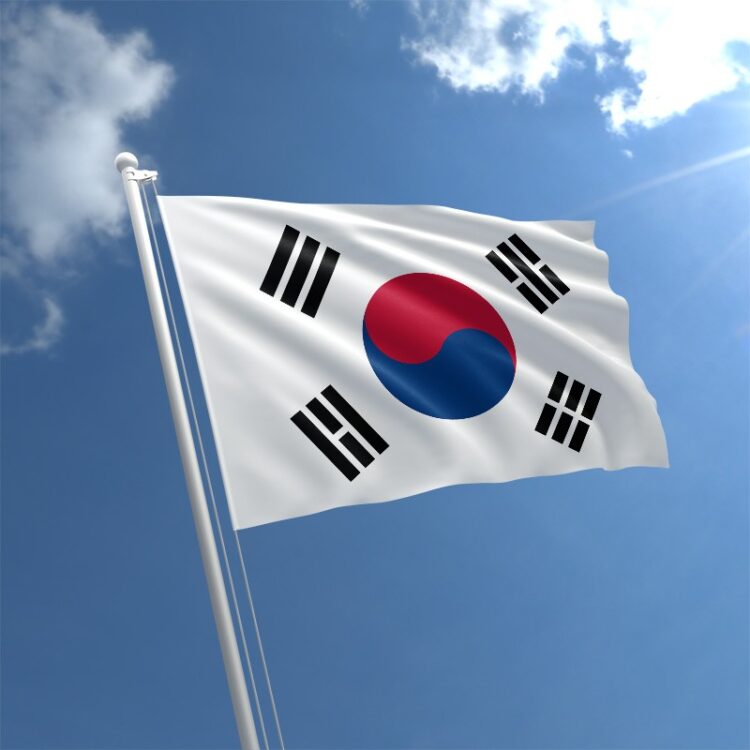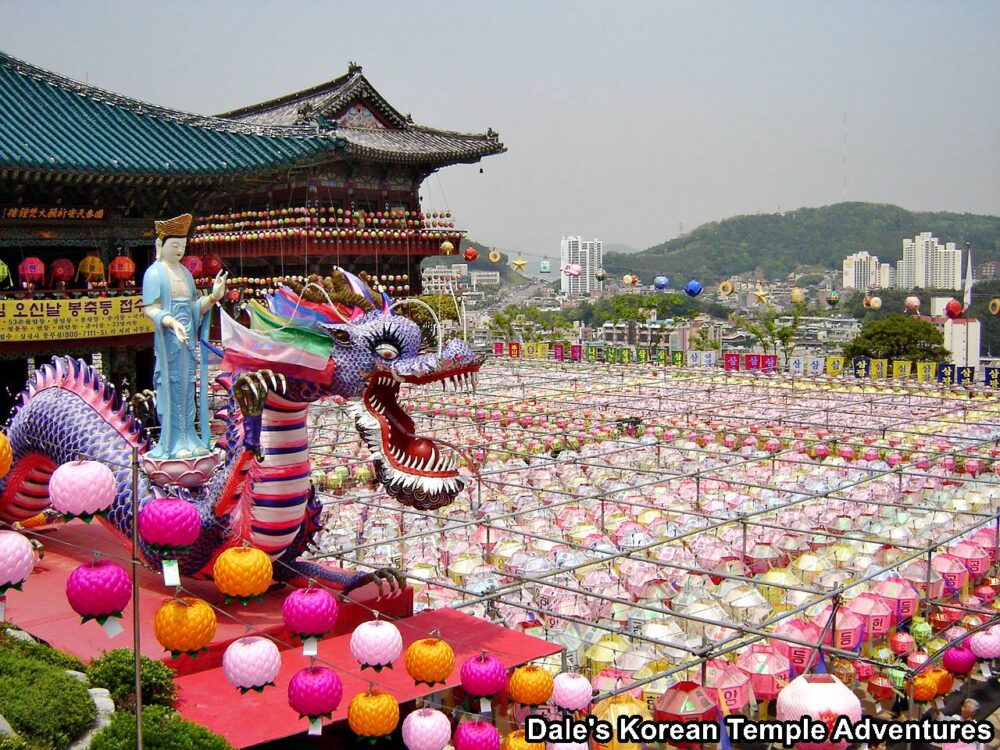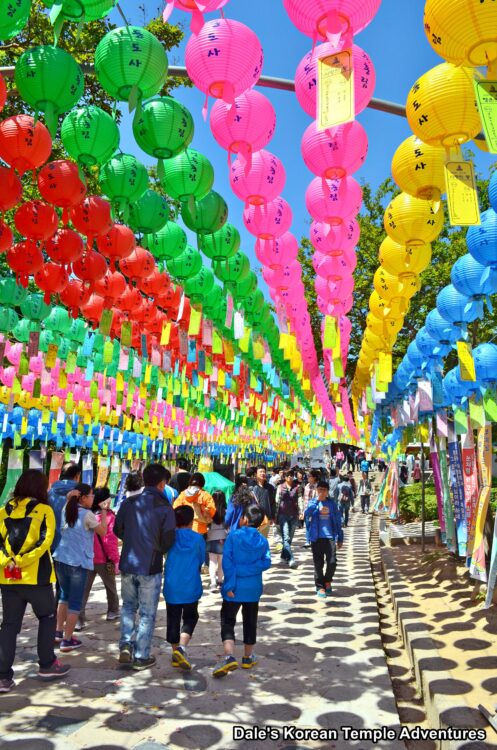The Age of Renewal – The Republic of Korea (1945-Present)

Since the liberation of South Korea from Japan, and much like the nation as a whole, Buddhism in Korea has undergone a modern day revival. After liberation in 1945, the celibate Korean monks that were marginalized during Japanese rule were able to return to their roles of authority at temples and hermitages. Also, a large number of men and women became ordained monks and nuns after liberation. In addition, a countless amount of new temples opened in the centre of cities and towns, which was unheard of during the Joseon Dynasty (1392-1910).
However, the regaining of Korean independence hasn’t always come without its problems for Korean Buddhism. Just as society was going through an unprecedented amount of social and economic changes from the 1960’s to the present, so too has Korean Buddhism. As Korean culture is rooted in Buddhism, Korean Buddhism mirrored the tumultuous changes occurring around it. During the dictatorial rule of Chun Doo-hwan (1980-1988), he infamously attacked Korean Buddhism. He sent in the military to raid temples and seize monks. As a result, hundreds of monks were imprisoned and tortured. And all throughout the 1980’s and 1990’s, there were sporadic temple burnings. In addition to these acts of arson, Buddhist artwork and pagodas have been vandalized. Some of the more extreme cases have seen red crosses being spray painted on temple walls and shrines, as well as Buddhist statues being decapitated. More recently, and under the Protestant Lee Myung-bak (2008-2015) administration, sectarian division continued between Buddhists and Protestants with the favourable appointment of twelve Christians being nominated to his presidential cabinet in comparison to only one Buddhist. Accordingly, this led to some discontent for Korean Buddhists.

Yet among this era of conflict, it’s also been a time of regeneration and renewal for Korean Buddhism. And it’s this renewal and regeneration that has thankfully outshone the conflict. This time of renewal has been led through education, social activities, and various forms of print and media. Korean Buddhist leaders of all sects are trying hard to shed their old-fashion image for a more contemporary one through inclusiveness, socialization, and modernization. These three seem to be the cornerstones in allowing Korean Buddhism to become more relevant to the needs of Koreans in the 21st century.
Presently, there are forty-two sects in Korean Buddhism, which include the larger Jogye-jong, Taego-jong, Cheontae-jong, and Won Buddhism. In addition to these forty-two religious sects, there are over sixty general Buddhist associations, forty-six youth associations, thirty student college associations, sixty-six middle and high school student associations, and ten children’s associations throughout Korea. And in a more social slant, there are over ten educational institutes which include universities and colleges that are run by various sects. Also, there are twenty-one public welfare associations, as well as three hospitals run by Korean Buddhists. And finally, towards modernization, in May, 1990, BBS (Buddhist Broadcasting System) went on air in an attempt to promote Buddhism both domestically and abroad. This goes hand-in-hand with the print efforts of Korean Buddhism. Now, there are ten different weekly newspapers, fifteen monthly magazines, four quarterly research journals, and a countless amount of official and unofficial websites dedicated to Korean Buddhism in various languages.
All of these efforts have been made to move Korean Buddhism from its past into the present and well beyond into the future. Fortunately, Korean Buddhism is no longer a secluded religion on a remote mountain top, isolated, and alone. Instead, it has taken giant leaps forward in modernizing and popularizing Korean Buddhism both for the present generation, as well as for generations to come.
